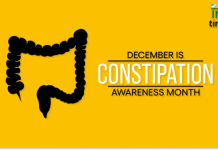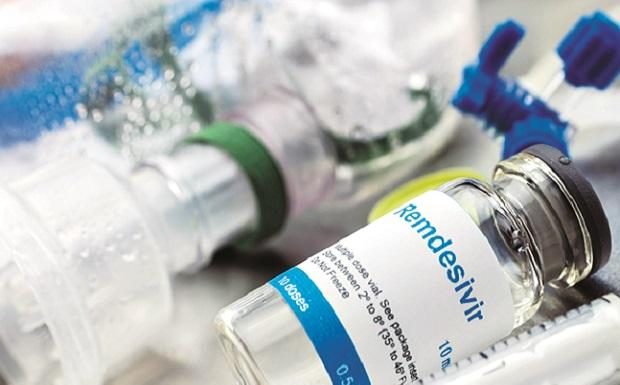
World Thrombosis Day, observed annually on October 13, serves as an important global campaign aimed at raising awareness about thrombosis—a condition where blood clots form in blood vessels and can lead to severe health complications like heart attacks, strokes, and pulmonary embolisms. The initiative, launched by the International Society on Thrombosis and Haemostasis (ISTH) in 2014, has garnered global attention, mobilizing medical professionals, patients, and the general public to take steps toward prevention, early diagnosis, and treatment of thrombosis.
Thrombosis is often called the “silent killer” because it can develop without obvious symptoms until it reaches a critical stage, putting lives at risk. World Thrombosis Day seeks to inform people about the importance of knowing the risk factors, recognizing warning signs, and understanding how lifestyle changes and medical interventions can prevent life-threatening blood clots.
What is Thrombosis?
Thrombosis occurs when blood clots form abnormally within blood vessels, blocking the normal flow of blood. These clots can form in veins or arteries, resulting in different types of thrombosis:
- Venous Thromboembolism (VTE): This is the formation of a blood clot in a vein, which includes two major conditions:
- Deep Vein Thrombosis (DVT): A blood clot that forms in the deep veins, typically in the legs.
- Pulmonary Embolism (PE): A dangerous condition where a blood clot travels from the legs (or other parts of the body) to the lungs, blocking one of the arteries.
- Arterial Thrombosis: This occurs when a blood clot forms in an artery, often leading to heart attacks or strokes.
Thrombosis can strike at any age and affect anyone, but certain risk factors increase the likelihood of developing the condition. By understanding the risks, symptoms, and preventive measures, people can reduce their chances of developing thrombosis.
The Global Burden of Thrombosis
Thrombosis is a leading cause of death and disability worldwide. According to the World Thrombosis Day campaign, venous thromboembolism is the third leading cardiovascular cause of death, after heart attacks and strokes. Globally, it is estimated that one in four deaths is related to conditions caused by thrombosis.
Despite its widespread impact, thrombosis remains underdiagnosed and often misunderstood. World Thrombosis Day aims to bring this hidden epidemic to the forefront, advocating for increased awareness, improved screening measures, and more robust healthcare systems to manage the condition.
The History of World Thrombosis Day
World Thrombosis Day was established in 2014 to raise global awareness about the causes, risk factors, and prevention of thrombosis. The date, October 13, was chosen to honor the birthday of Dr. Rudolf Virchow, a German physician, and pathologist known as the “father of modern pathology.” Virchow made significant contributions to understanding thrombosis and its role in cardiovascular disease, developing the concept of “Virchow’s Triad,” which outlines the factors contributing to blood clot formation: stasis (poor blood flow), vessel wall injury, and hypercoagulability (increased blood clotting tendency).
Since its inception, the campaign has gained widespread support from healthcare organizations, patient groups, and governments. Each year, World Thrombosis Day is marked by educational events, media campaigns, and social media engagement, all aimed at educating the public about the dangers of thrombosis and how to prevent it.
Goals of World Thrombosis Day
The primary objectives of World Thrombosis Day are to:
- Raise Awareness: The campaign seeks to inform the global population about the risks and symptoms of thrombosis, with a particular focus on venous thromboembolism.
- Promote Prevention: By encouraging people to adopt healthy lifestyle habits and follow medical advice, the campaign aims to reduce the incidence of thrombosis-related deaths and complications.
- Encourage Early Diagnosis: Early detection is key to preventing the life-threatening consequences of thrombosis. World Thrombosis Day emphasizes the importance of knowing the signs and seeking medical attention promptly.
- Improve Healthcare: The campaign advocates for improved healthcare services and policies, ensuring that thrombosis prevention, diagnosis, and treatment are available to all.
Risk Factors for Thrombosis
While thrombosis can affect anyone, certain factors significantly increase the risk of developing blood clots. These include:
- Age: The risk of thrombosis increases as people age, particularly after the age of 60.
- Surgery or Hospitalization: Prolonged immobility during or after major surgery can lead to the formation of blood clots.
- Cancer: Certain types of cancer and cancer treatments raise the risk of developing thrombosis.
- Prolonged Immobility: Sitting for long periods, such as during long-distance travel, can contribute to the development of deep vein thrombosis.
- Pregnancy and Postpartum: Hormonal changes during pregnancy and the postpartum period can make women more susceptible to blood clots.
- Family History: A family history of blood clots or genetic clotting disorders can increase the risk.
- Obesity: Excess body weight puts extra strain on the veins and increases the likelihood of thrombosis.
- Smoking: Smoking damages blood vessels and increases the likelihood of clot formation.
Understanding these risk factors is crucial in taking proactive steps to prevent thrombosis.
Symptoms of Thrombosis
One of the most dangerous aspects of thrombosis is that it can develop silently, with no obvious symptoms until the clot becomes life-threatening. However, in many cases, there are warning signs that can help with early detection:
- Deep Vein Thrombosis (DVT) Symptoms:
- Swelling, usually in one leg
- Pain or tenderness in the leg, especially when standing or walking
- A warm sensation in the affected leg
- Red or discolored skin on the leg
- Pulmonary Embolism (PE) Symptoms:
- Sudden shortness of breath
- Chest pain, especially when breathing deeply
- Rapid or irregular heartbeat
- Coughing up blood
If any of these symptoms are experienced, it is crucial to seek medical attention immediately, as timely treatment can prevent serious complications.
Prevention and Treatment of Thrombosis
Preventing thrombosis involves a combination of lifestyle changes and medical interventions. Key preventive measures include:
- Staying Active: Regular physical activity helps maintain healthy blood flow and reduces the risk of clots. For individuals who are immobile for long periods, such as during travel, moving around periodically and stretching the legs can prevent clot formation.
- Hydration: Drinking plenty of water and staying hydrated can prevent blood from thickening and reduce the risk of clots.
- Compression Stockings: For those at risk of DVT, wearing compression stockings can help improve blood flow in the legs.
- Medications: In some cases, doctors may prescribe blood thinners or anticoagulants to prevent clot formation, especially after surgery or during high-risk situations.
Treatment for thrombosis depends on the severity and location of the clot. Anticoagulants, clot-busting medications, and in severe cases, surgical interventions may be required.
The Importance of World Thrombosis Day
World Thrombosis Day plays a crucial role in shining a light on a condition that often goes unnoticed until it is too late. By raising awareness about thrombosis, the campaign empowers individuals to take control of their health, recognize warning signs, and seek medical attention early.
As the global community comes together to observe World Thrombosis Day on October 13, the message is clear: thrombosis is preventable and treatable, but only if we take the necessary steps to understand it, recognize it, and act quickly.



































